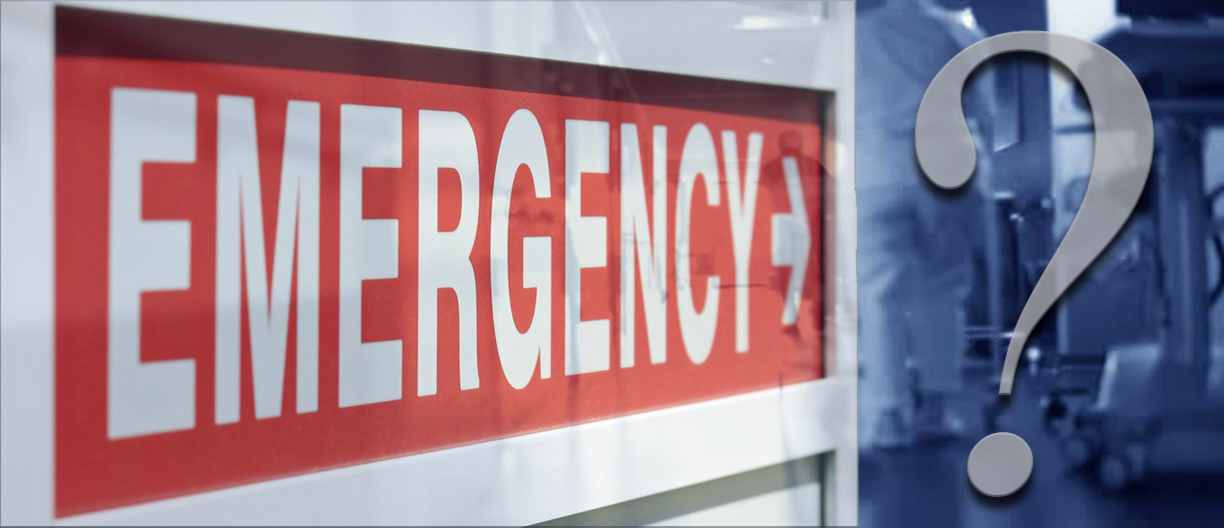To Go to the Emergency Room or Not… That is the Question
To Go to the Emergency Room or Not… That is the Question
April 19, 2016
Emergencies can happen any time and at any moment. This goes for whether you accidently cut your finger while making dinner, or your child develops a fever in the middle of the night. When these circumstances come up, how do you know if it’s a true emergency? Should you go to the Emergency Room (ER) or not?

When determining an answer to this question, you should keep in mind that the main purpose of an ER is to provide 24/7 life-saving care if you feel a medical problem cannot wait for a doctor’s office to open or it cannot be treated effectively by an Urgent Care Center or other alternative option. This is especially true if you believe that you’re in serious physical danger if you’re not treated immediately. Specifically, ERs should be used to treat major medical emergencies (including heart attack symptoms, trouble breathing, severe or uncontrollable bleeding, or stroke signs). However, many people unfortunately use the ER as a place to receive urgent or basic care without realizing it. By doing this, you are spending more than you need. A trip to the ER may cost over three times as much as it would at your doctor’s office. (Under the NYCDCC Welfare Fund Plan, there is a $200 copayment for an ER visit if you are not admitted within 24 hours.)
It’s important to recognize that “urgent care” is not necessarily “emergency care.” Urgent Care Centers are same-day clinics that can handle a wide range of conditions that need to be treated right away but are not emergencies. They can usually do X-rays, lab tests, and stitches. Urgent Care Centers are typically open extended hours, including nights and weekends. It is a great option for when appointments are unavailable or if you need treatment outside of office hours.
Additionally, Retail Health Clinics (often pharmacies or grocery stores) treat basic symptoms like cough, sore throat, rash, or minor fever. Similar to Urgent Care Centers, Retail Health Clinics are usually open extended hours including nights and weekends. Although they are open similar hours to Urgent Care Centers, Retail Health Clinics are limited to only treating those basic symptoms that technically do not need to be treated right away.
Generally, if your condition is not an emergency, it is always recommended that you visit your family doctor if possible. The key to deciding whether or not you can see your family doctor is checking how long you have to wait for an appointment and weighing that against the severity of your medical problem. To determine this, common sense factors in. For example, there’s no point in waiting five days to see your family doctor for a sore throat or a bladder infection. Usually, your doctor will make time in his or her office every day to treat patients with acute emergencies. If you choose to see your family doctor, carefully describe your issue to the receptionist or nurse when you call to make your appointment. They should let you know whether the doctor can see you that day or not.
If you are still not sure where to go, Empire BlueCross BlueShield has a 24/7 NurseLine where you can speak with a registered nurse. Just use the number on your ID card for free advice!








